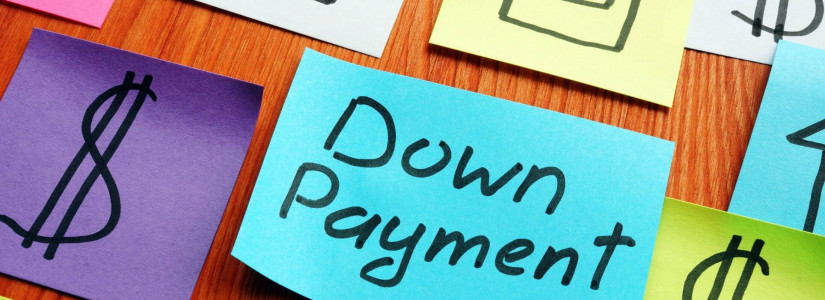Down Payments for a Home May Get Lower This Year
In 2022, the median down payment for first-time home buyers was about 13%. This represents an increase from 2021 when the down payment for first-time home buyers was around 7%, while for repeat buyers it was about 17%.
For an average home that costs almost $400,000 that means buyers paid about $50,000 in 2022. Yet, real estate experts anticipate that home prices will decrease in 2023. This trend could mean lower down payments for home buyers, but down payments depend on several factors.
Down Payments and Conventional Loans
A down payment is the amount of money a house buyer pays upfront to secure a home. A home buyer usually takes out a loan to pay for the rest of the house over time.
Down payments are calculated as a percentage of the house price. For example, a $350,00 house with a 10% down payment means the buyer pays $35,000 upfront.
The mortgage lender, or bank providing the loan, usually requires a down payment as a way to secure initial ownership of the home by the buyer.
Traditionally, the down payment on a house has been 20%. Yet, most people today do not pay this percentage. A recent realtor report revealed that almost half of potential home buyers think they should pay around 16% of the home’s value as a down payment.
Many homebuyers do not pay that much, though, even with conventional loans.
Conventional loans or mortgages are loans that are not guaranteed by the federal government. Since conventional loans have a greater risk, lenders usually require higher credit ratings and income levels.
Fannie Mae’s HomeReady and Home Possible are examples of conventional loan programs that offer a down payment as low as 3%. HomeReady is aimed at first-time home buyers and Home Possible is targeted at low to moderate-income borrowers.
Fannie Mae and Freddie Mac Loans and Down Payments
Most lenders sell their loans to Fannie Mae or Freddie Mac. These are two shareholder-owned companies that operate under a congressional charter. Both entities guarantee a majority of mortgages in the United States.
Fannie Mae and Freddie Mac either hold on to home loans or package them together into bonds that are then sold to investors. These companies guarantee that those investors will earn money even if a loan holder fails to make payments.
Both Fannie Mae and Freddie Mac are currently expanding the loan amounts they will support. First-time home buyers can now get loans up to $1 million in areas with high costs and about $725,000 elsewhere. This change also helps reduce down payments.
Buyers should be aware that loans provided with a low down payment usually require the purchase of mortgage insurance. This insurance results in a premium added to a monthly mortgage, pushing up the costs.
Freddie Mac has estimated that a home buyer should expect to pay about $30 to $70 each month for every $100,000 that is borrowed. Yet, once the borrower archives a 20% stake in a home, this insurance is normally not required any longer.
Most home buyers pursue conventional and Fannie Mae to Freddie Mac loans, but others opt for government-backed loans, some of which do not require a down payment.
Government-backed Loans
Government-backed loans can provide home buyers with no or low down payments.
The Department of Veteran Affairs offers VA home loans to veterans, current service members, and eligible spouses with no down payment. The Department of Agriculture also provides a USDA loan for home buyers in rural and suburban areas who meet certain income limit requirements that require no down payment.
The Federal Housing Administration’s FHA loans provide a low 3.5% down payment. Requirements for this loan include a credit score of at least 580. This loan has been popular with lower-to-middle-income first-time home buyers.
FHA loans come with some additional costs, though. Borrowers pay both an upfront mortgage insurance premium of 1.75% of the loan provided and an annual insurance premium on loans with a less than 5% down payment.
In addition, FHA loans do not allow borrowers to get rid of the mortgage insurance once they have established a 20% equity the way that conventional, Fannie Mae, Freddie Mac loans, and other government-backed loans do.
Down Payment Assistance
The federal government also provides Down Payment Assistance programs, especially to help low-and middle-income first-time home buyers. These programs usually require little or no down payment.
To learn more about down payments and assistance with them, visit FreshGigsClub. Down payments can be more manageable than they seem.











